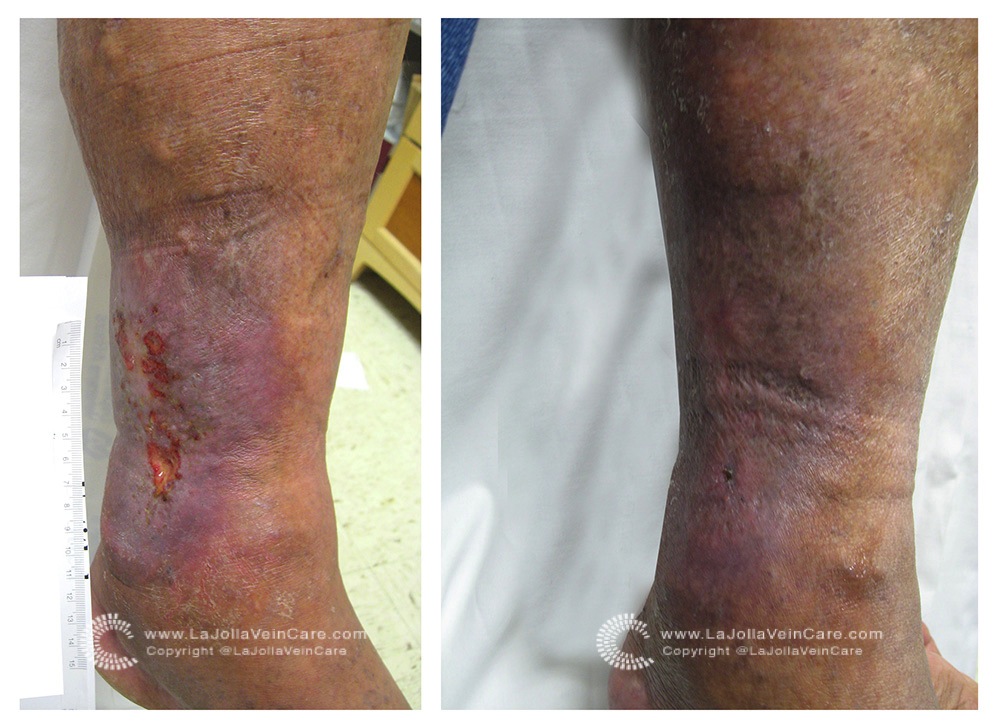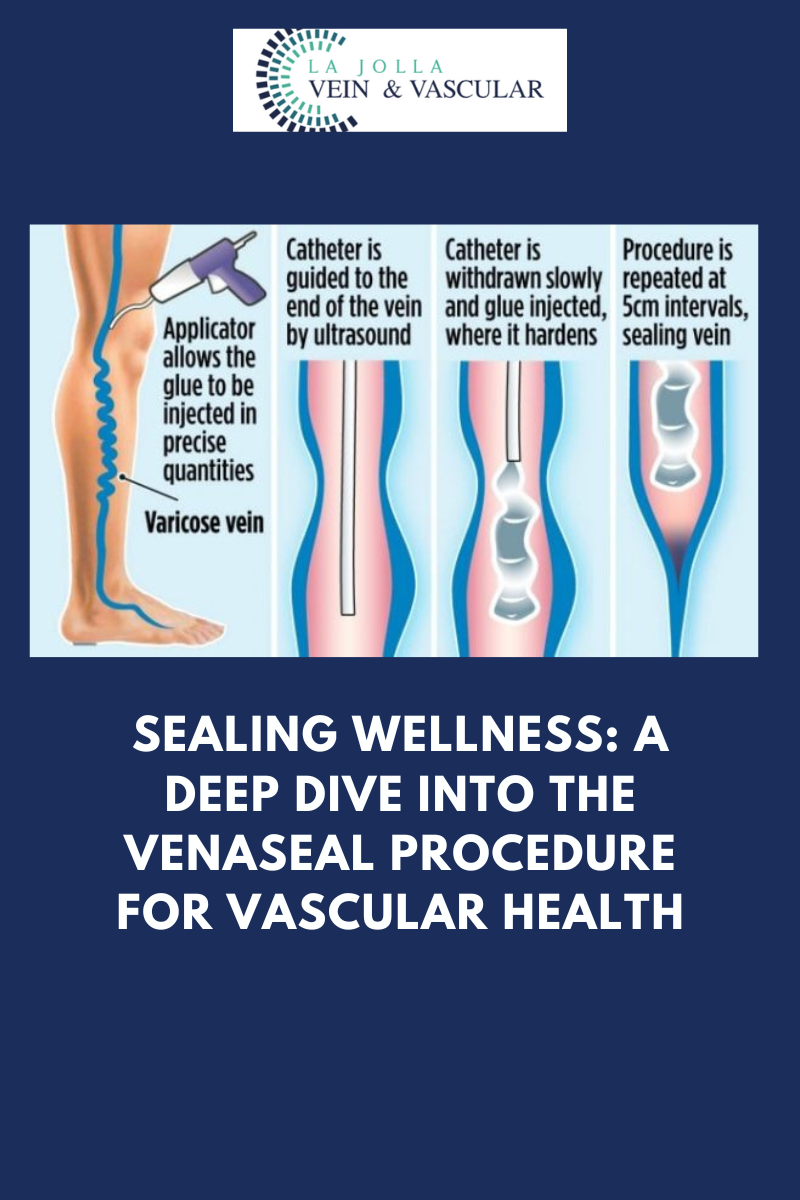Can Varicose Veins Cause Leg Ulcers?

VENOUS LEG ULCER, BEFORE: This is a venous leg ulcer, caused by venous reflux or venous insufficiency. In this picture, you can see varicose veins above the wound.

VENOUS LEG ULCER, AFTER: Because this individual had reflux only in the superficial varicose veins, treatment consisted of foam sclerotherapy of the varicosities and compression with unna boot dressing. The wound healed rapidly and note that the varicose veins are gone.
A venous leg ulcer is an open wound on the leg, caused by long-standing vein problems. It is the most severe form of chronic venous insufficiency (CVI). Venous leg ulcers are common, accounting for over 70% of all leg wounds. It affects 1% of Americans and is the seventh leading cause for disability in the United States.
It is usually located around the ankle (on the inner or outer sides). It is caused by underlying venous insufficiency, or venous reflux. The persistent venous reflux (back flow of blood through faulty valves) causes high pressure within the leg veins. The high pressure, is then exerting outward on the skin, causing an inflammatory response, eventually causing the skin to break down. Visible signs of venous disease are varicose veins, ankle swelling, skin discoloration around the ankle and usually precede the leg wound. Underlying venous insufficiency can be detected by duplex ultrasound imaging (a non-painful study).
The treatment of venous leg ulcers is to correct the underlying problem: the faulty veins. Treatment of the underlying non-functional veins will reduce pressure from venous hypertension, allowing the wound to heal. There are a number of non-surgical treatment options that can accomplish this including foam sclerotherapy and endovenous ablation, depending on the affected veins. To determine if your leg wound is related to a vein problem or for treatment options, call us for more information.





